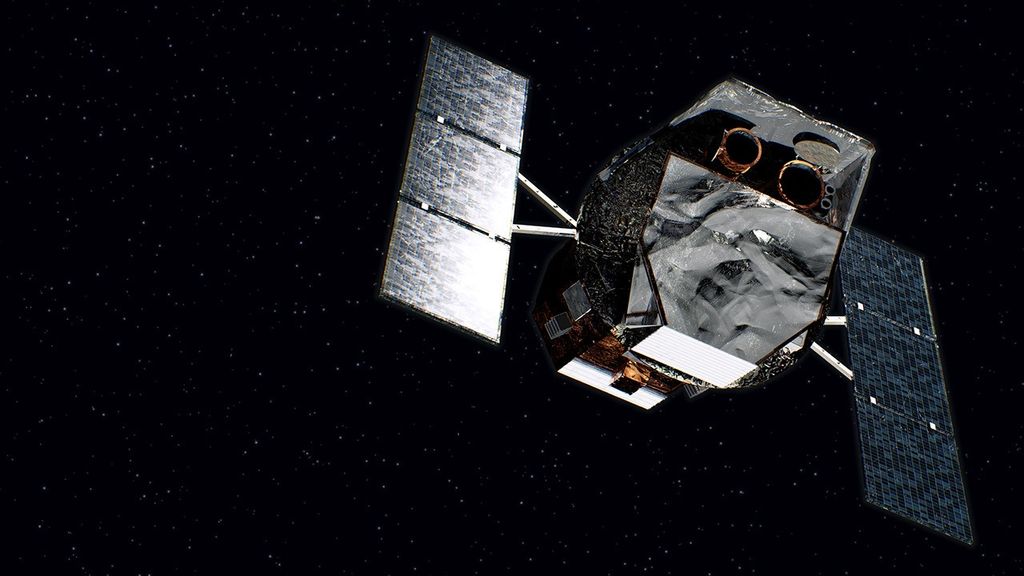
Hal Levison
Scientist - Southwest Research Institute
Contents
- Where are you from?
- Describe the first time you made a personal connection with outer space.
- How did you end up working in the space program?
- Who inspired you?
- What is an Institute Scientist?
- Tell us about a favorite moment so far in your career.
- What advice would you give to someone who wants to take the same career path as you?
- What do you do for fun?
- If you were talking to a student interested in science and math or engineering, what advice would you give them?
- Where are they from?
Where are you from?
I am originally from Philadelphia, Pa., and I currently live in Longmont, Colo.
Describe the first time you made a personal connection with outer space.
I have always been a geek! Of course I enjoyed reading science magazines, and watching scientific television shows. I had fish tanks and lizards as a kid, and I was always fascinated with astronomy. There was no doubt in my mind that I was going to be a scientist. It was always the way I looked at the world.
Being just interested in the science is not enough. You have to enjoy the nuts and bolts of science; otherwise you won’t enjoy going to work every day.- Hal Levison
How did you end up working in the space program?
I went to the University of Michigan for graduate school and my first post doctoral position was for NASA’s Ames Research Center (ARC).
Who inspired you?
Astronomy took hold once I had a particular astronomy teacher in high school. This was back in the seventies and at that time there was a lot of money available to schools for the study of astronomy. My school had its own planetarium, and it was the director of this planetarium who inspired me in the study of astronomy.
What is an Institute Scientist?
As an Institute Scientist I perform numerical simulations on the formation and the evolution of the solar system. I also do a lot of work with Kuiper Belt objects. How I got interested in these objects in the first place was because I was trying to understand where a particular kind of comet called the Jupiter Family Comet came from because these comets have strange orbits. Since these comets are active and their orbits are bizarre we can get a lot of information on their chemical make-up and how they formed. And by learning about their chemistry we learn about the protoplanetary disk. We want to understand where we came from, where the water on Earth came from, the volatiles, the organics, and to do that we need to look out in the solar system to figure this out.
Tell us about a favorite moment so far in your career.
There are so many. It would be hard to pick just one. The joy of discovering something no one has known before, and to be able to sit in your office and tell yourself: “I am the first person in history to know this little piece of information.”
Perhaps one favorite could be my work on the Nice Model of the solar system. We proposed that the planets formed in a much more compact configuration and that the planets started crossing one another. Uranus and Neptune got scattered out by Jupiter and Saturn and then evolved into their current orbits due to the gravitational interactions with the disk of particles. And when we realized that this model actually worked it was a really exciting moment. It was an idea that no one had really thought of before and it changed the whole community’s perspective on how the planets formed and how they moved in these violent events.
What advice would you give to someone who wants to take the same career path as you?
Be a physics major as an undergraduate and then perhaps go into astronomy as a graduate student. Somebody once gave me that advice and it worked out for me.
What do you do for fun?
My main hobby is working on my small collection of antique cars (when I have the time, of course). I used to take them to car shows too. I find that I need to do things with my hands rather than spend all my day sitting in front of a computer. So fixing cars is probably the thing I do to relax, even though it sometimes can be frustrating.
If you were talking to a student interested in science and math or engineering, what advice would you give them?
You have to like the process. Being just interested in the science is not enough. You have to enjoy the nuts and bolts of science; otherwise you won’t enjoy going to work every day.
Where are they from?
Planetary science is a global profession.




























